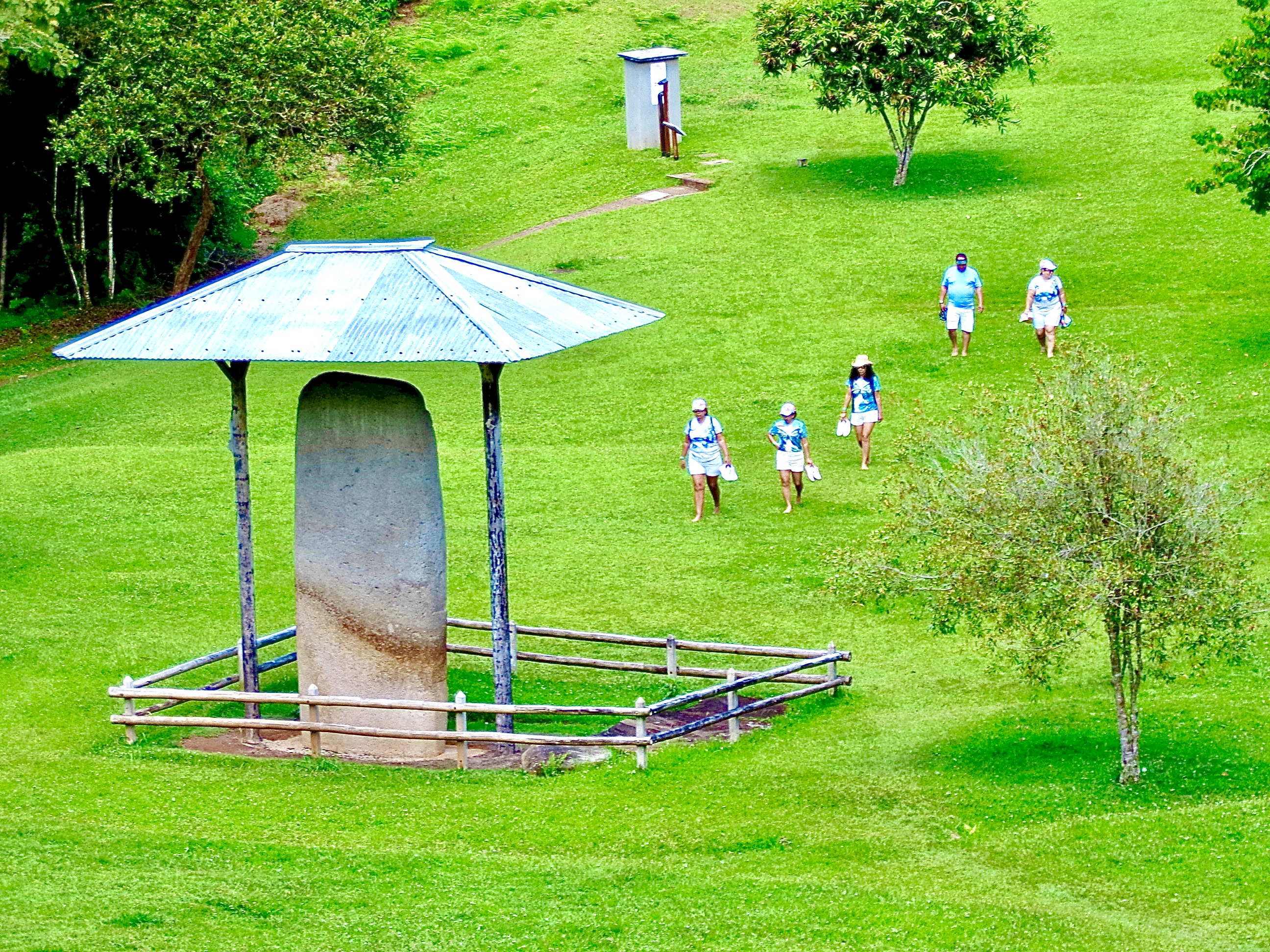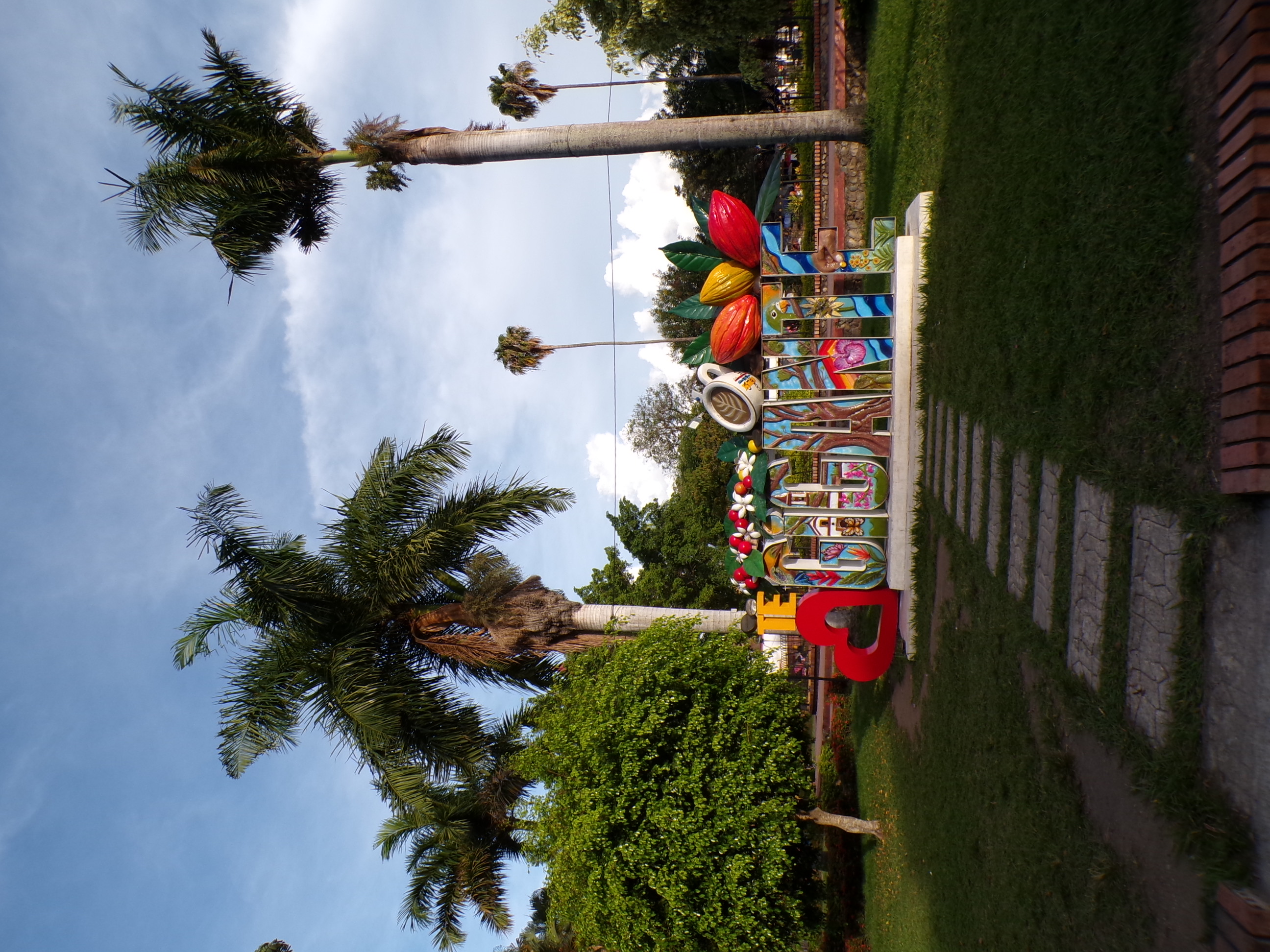Jon McInnes





Colombia's department of Huila in southern Colombia spans the Andes mountains and is known for it's natural landscapes, coffee culture, pre-colombian archaeological parks and quaint villages.
Huila produces some of Colombia's finest high altitutude coffee.
It is also home to the San Agustin Archeological Park, and the National Park of Tierradetro, both UNESCO World Heritage sites, and home to mysterious pre-Colombian stone statues and tombs dating back over 2,000 years.

The Magdalena River - Colombia's longest and most important river - originating in the mountains of Huila. It runs through the country emptying into the Caribbean.

The Tatacoa Deset, is the second largest arid region in Colombia with red and grey rock formations and is one the best places in South America for astronomy and star gazing.
The Nevado del Huila Volcano is Colombia's highest and most active volcano located in the high plains of Huila.
But the region also boasts a numer of beautiful Spanish Colonial villages that are visited year around by both Colombian and international tourists alike: villages like Garzon, Gigante and Paicol.

People have been inhabiting this steep terrain for 6,000 years. And these tombs and statues were created around 3,300 B.C. - around the same time they were building the pyramids in Egypt; well before the Incas, whose civilization arose in the 13th century and was thriving when Columbus discovered the Americas.
The San Agustin Archaeological Park is but a mile outside of the village and features a museum and several outdoor sites wth statues and tombs. Jeep tours can be arranged to visit the surrounding archeological sites of Obando, El Tablon, Alto del las Piedras and Alto de los Idolos.
One can also hike or go on a horseback tour which departs from San Agustin to visit the archaeological sites of La Pelota and La Chaquira which are in the mountains just outside of town.

Underground tombs have been found all over the Americas - from Mexico to Argentina but their largest concentration is in Colombia. And Tierradentro is one of Colombia’s greatest pre-Hispanic attractions.
Though technically located in the department of Cauca, Tierradentro lies on the border with Huila and is archeologically aligned with the sites of San Agusttin.
There are 162 subterranean tombs located in 4 different sites dating back to the 6th to 9th centuries A.D. Carved into volcanic rock. Spiral staircases lead to the tombs main chambers 15 to 24 feet below the surface. The main rooms are 30-36 feet wide with supporting columns and small walled chambers where bodies were buried. The walls were scored with geometric patterns and painted red, black and white; red representing life, black death and white the hope of passing to the next life.
These burial sites were abandoned before the 13th century. Farmers discovering the tombs uncovered them which led to many of the tombs being looted during the 18th and 19th centuries. In 1945, Tierradentro was declared a National Monument. The Colombian government created the park to protect the tombs, sites, carvings and paintings from looters and further natural deterioration. Most of the main tombs were covered with roofs to prevent flooding and padlocked doors installed over tomb entrances.

At the park entrance there are two small museums. From there, a 30 minute climb up a paved road is the main site, Alto de Segovia, where there are 29 tombs mangificiently preserved. From Segovia it's a 20 minute walk up to Alto del Duende - a smaller site with 13 tombs. And from there its a 35 minute walk to El Tablon where there are 9 statues similar to the ones found in San Agustin. The footpath continues to the village of San Andres de Pisimbala' - a favorite lunch stop. This is a beautiful though remote site. There are plenty of cheap lodgings on the main road below. Be prepared for a good work out.
Tatacoa is always hot, around 100 degree F. during the day, cooling down little at night. During their quest for El Dorado, the Spanish called it "the valley of sorrows".
Tatacoa gets it's name from an extinct rattlesnake which was once very common in this desert. The snake's demise is blamed on poachers who sold the snake's hide and medicinally valuable poison.
Tatacoa is the second largest arid zone in Colombia. La Guijara*, located in the north of Colombia by the Venezuelan border, is the largest.

Tatacoa is an unusually beautiful and magical place known for its beautiful red desert and clear sky which explodes with stars and meteor showers at night. With no light or air pollution, this desert is one of the best places in the world to see the stars. And being near the equator allows simultaneous observation of both northern and southern skies.
There’s an observatory in desert called Observatorio Astronomico de la Tatacoa run by Fernando Rua Restrepo, a resident professor of astronomy. He gives a laid back star gazing show every night, letting attendees gaze through several telescopes aimed at the stars and moon. He points out constellations with a laser beam flashlight while everyone lays on their backs on a large green carpet rolled out over the desert floor taking in the night sky. (cost 10,000 COP per person)
Villavieja is a beautiful village known for its colonial architecture and as the door to the Tatacoa Desert. While there are some acccomodations in the desert near the observatories, better accomodations can be found in Villavieja. There is are a couple of good museums in town along with a number of good restauranats, bars and a craft beer pub.
There are a number of little cities and towns tucked in the Andes mountains of the of Huila's Cordillera Central. While the following towns can't live up to the sites and activities found in San Agustin, Tierradentro, Villa Vieja and the Tatacoa Desert, the towns promoted by Huila Tourism do have their charm.

It's a tiiny village of just over 7,000 people but the town square and the cobbled streets are a delight.
To get there with publc transport take a bus from Nieve or La Plata passing through Paicol. It's a beautiful road through a canopy of trees. Or a take a collectivbe car from Garzon or La Gigante which goes direct to Paicol.
Paicol is also known for it's adventure tours. There are water caves to explore in town and a waterfall outside of town. Locaterd on the Paez river, Paicol is also known for its higy-adrenaline white water rafting. excursions. Trips are organized by the agency Route 24.
There are some accomodations in town if one wants to spend some time.

The town is also famous its mirador and a park called the Mano del Gigante. It features giant scultpted hand extending out over the valley floor which one can climb onto and take rather well-known tourist photots standing on the hand with the green valleys of Huila falling below. The park was created in 2020 by the sculptor Cristian Palomino. There are a few other sculpted attractions within walking distance of the hand with plenty of restaurants and bars. The place can get crowded on the weekends and holidays .
To get there take a taxi take you near the park which is 9 km outside of town. The taxi charges 30,000 COP each way and will leave you outside of the park where one must take a bus to get up the mountain to the park entrance which costs 16,000 COP. A a ticket to enter the park runs another 23,000 COP.
The park is a bit of Colombian tourist attraction, not exactly cheap to get and enter and the whole ordeal will probably take a half a day. But it is what it is - so decide for yourself.
Garzon is a town in the center of Huila. It is known for being one of the best cities in the world where coffee if grown and processed. It is a small, busy city with a population of 100,000.
The plaza Boliver is very stunning but as of this writing was closed and under construction and not to be reopened until april of 2026. The town is known for religious tourism, local gastronomy and festivals during the year.
There really isn't much reason to include this town in your itinerary in my opinion . Paicol is much more quaint, photogenic. and worth the trip even if transportation is a hastle Gigante is more interesting and at least offers some activitties.

is the capital of Huila and most populated city in the department. It is located in the valley of the Magalena River and is one of the most imortant cities in southern Colombia. It is a hot city and often used as a base from which to go see the Tatacoa Desert. But my advice is to skip it. Go directly to Villavieja instead.The town is smaller and more interesting.
There are some sites to see in the city. The Colonial church, tower Mohan, monument to Cacica Gaitana, Santander park and the river walk or malecon with it's riverside fish markets. But I found the city to be very hot and dirty. The banks of the malecon along the Magdalena is filthy with strewn garbage. And the center of the city wasn´t much better. Don't stay there. There are some more well-heeled neighborhoods in the north of the city, within walking distance of Nieva´s center, with some good hotels and restaurants which are much more pleasant.
